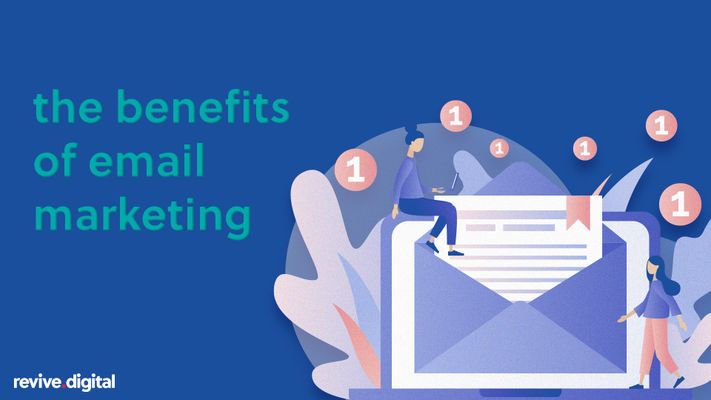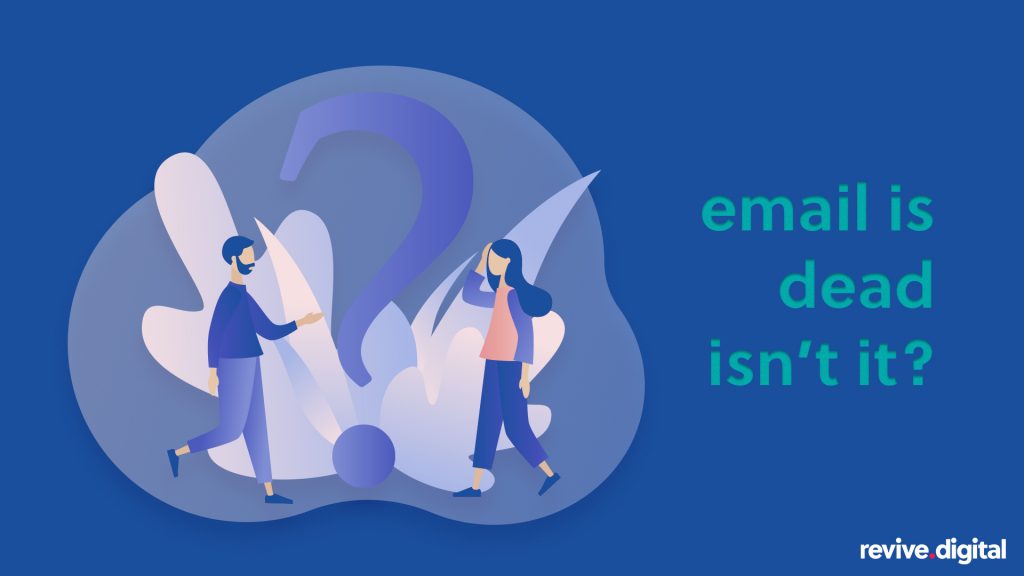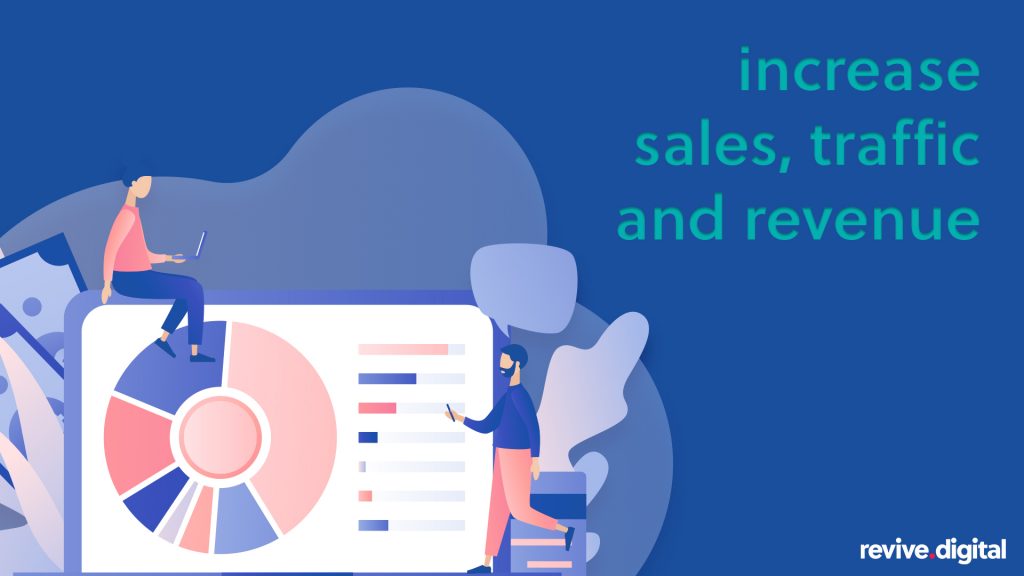The Benefits of Email Marketing
Email. It's One of Marketing's Most Powerful Tools
What will bring you a 4,124% return on your investment? Facebook ads? Instagram influencers? Google Adwords? No... And that's not to say that those are bad forms of marketing. They're great and highly effective, particularly Google ads. But the huge returns generated by email outshines them all. And that's just one of the benefits of email marketing. Ok, that four-figure percentage does seem unbelievable – 'you too could be earning a million pounds a day in just six months' – but the ROI from email is £42.24 according to a study published last year by the Direct Marketing Association. That's £42.24 back for every £1 spent and it's been increasing every year. The same study also showed the average lifetime value of an email address is £37. They're big numbers and show why email marketing should be at the top of a marketer's thinking. Why is it so successful? It's that perfect blend of ease of execution alongside cost effectiveness that makes emailing your customers and prospects one of the best things you can do for your business.
But Email Marketing is Dead Isn't It?
That's what people were saying a few years back. Email didn't have a future. But apparently neither does the novel (did anyone tell Audible yet?). Marketing channels are sometimes like waves; they peak and they trough depending on the quality of the output and market saturation. And of course marketers do love the latest bright shiny object, neglecting less flash, but trusted, methods. At one time everyone was doing email, many badly. There was spam and phishing (ok, there still is). No one targeted customers properly... and customers got wise to unsolicited sends. They knew their rights. So when social media got massive the digital clairvoyants announced email's imminent demise. Email, however, remains most people's preferred form of marketing contact. And it's been more than 40 years since the first email was sent. That's a pretty good track record. Good brands understand that respecting their audience creates longevity and loyalty. It builds relationships. Simply trying to earn a quick buck is often a race to the bottom. And in that environment sending email is not only about about sales, but about keeping in touch, having conversations, lodging your brand in a customer's mind by constantly giving your audience what they want to read about because... 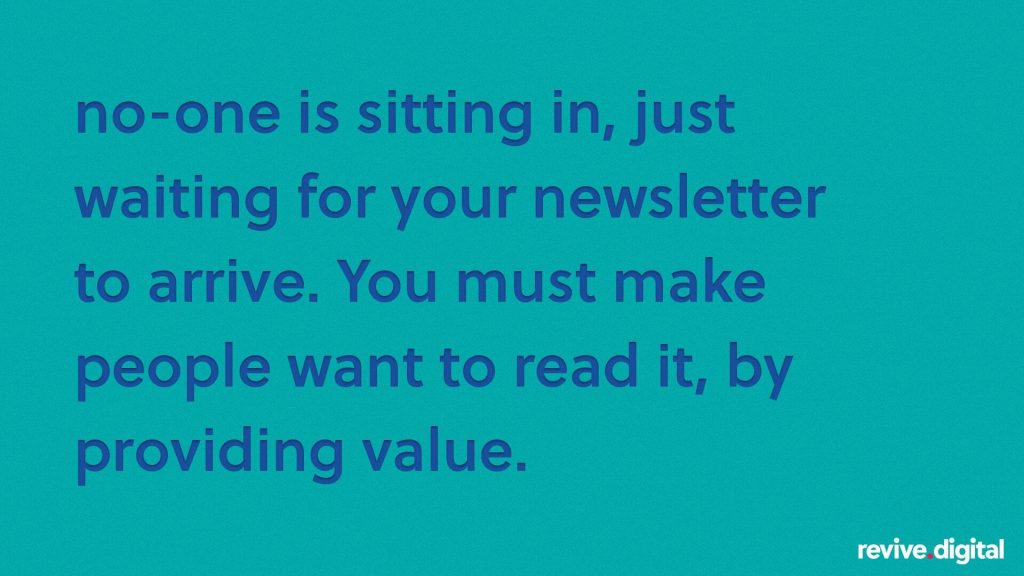
How Do You Do Email Marketing? Very Well, Thank You!
One of the trickiest parts of successful email marketing is building the list in the first place. (And on a side note, never buy a list. Just don't... unless you want a database of probably useless, unengaged email addresses and to risk being blacklisted by your email service provider.) It takes time to create a list of quality email addresses, ones that you can send to on a regular basis. And that list is a living, breathing thing. People subscribe and unsubscribe, some open but don't click. Some open offers but not information... but one of email's great benefits is the ease with which all this can be managed. And the rewards? Massive ROI and customer lifetime value. So aside from these huge returns, what other benefits are there? Take a look at these:
- Increased sales
- Provide ongoing communication between your business and customers
- A platform for customer feedback and opinion
- Help boost traffic
- Show off your brand's personality
- Deliver personalised content and make segmentation easier
- Can be automated
- They're cost effective...
- Easy to measure...
- … and easy to share
- Can deliver instant impact
And what's even better is that it doesn't require teams of people to get your emails off the ground.
Boost Your Traffic, Get Sales, Generate Revenue
Unless you're in it for fun, the main function of a business is to make sales. And as we've noted, done properly, email delivers a huge financial return on your investment. According to Marketing Week email generates around £29bn in retail sales each year. So, what makes it this powerful? Well, in just a matter of clicks you can learn about an irresistible offer, click to the site and purchase. Boom. Ecommerce businesses apply this daily, weekly, monthly; constantly testing and refining their email content and the frequency of sends to deliver the perfect mix of communication and profitability. It boosts traffic and ultimately sales. One of the tougher issues now, however, is getting noticed among all that inbox noise... If you're an Amazon customer you'll know just how its communication model uses email to great effect. Amazon's emails are simple, and designed to make it as easy as possible to purchase something you've looked at but not even added to your cart, or something similar to a previous purchase that you might like. Add to this more transactional elements, like abandoned basket emails, and you can have a seriously effective revenue channel. 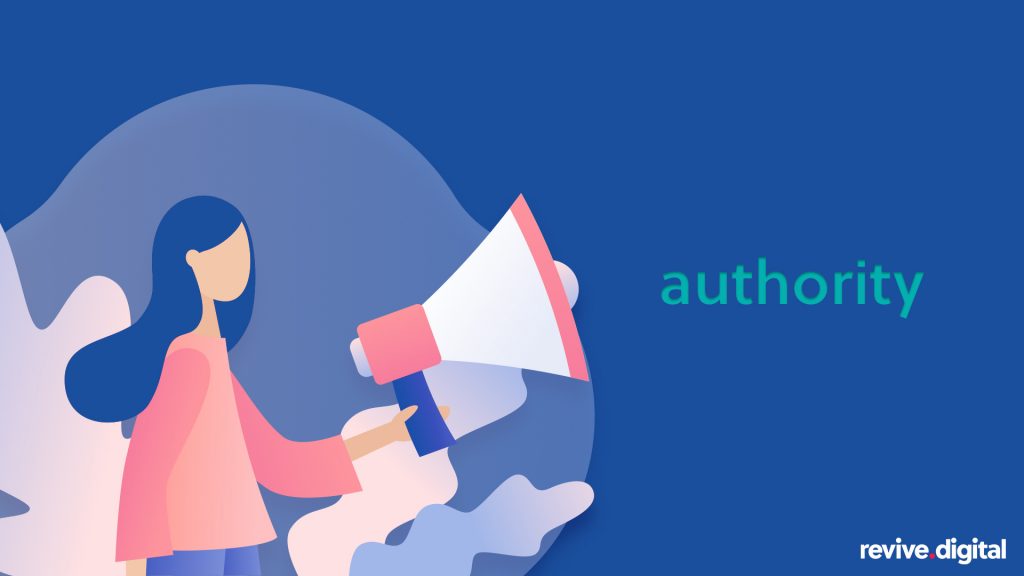
Communication – Building Authority and Credibility
At its most basic email is about communicating something. For example, a retail business might send an order and payment confirmation when someone buys. That's a simple exchange of transactional information. But it's still key communication and an opportunity for you to showcase your brand in its best light. Email is also perfect for keeping in touch with your customer base, helping build authority or showcasing your expertise and credibility. You've published a new blog, so let them know. You have a new service... don't wait for your audience to stumble across it. Email them.
Your email can have instant impact, so make it easy for your audience to share.
As well as showing off your seriously good content, you can email the purchaser a helpful after-sale guide. For example, buy a Dyson hoover and you'll be emailed a couple of times with cleaning tips and other helpful bits of information after you've bought. The purchaser-brand relationship shouldn't stop at the till. Phoning customers just wouldn't yield the same results. As well as being time consuming the customer would have nothing to refer to when they were ready to listen (also the chances of catching them at a 'good time' on the phone are slim). Email just works. And if your business is an authority in its field how will your audience ever know when you have information to share? Reaching out by email can provide your audience with a constant source of quality information and amplify your credibility in your industry. If people want some improvement in their life and you're seen as the experts, your business will flourish. When people know that what's coming is good, well crafted and adds value to their life, they'll open, they'll click. And you'll be rewarded in the long-term with loyalty. But how do you make the content really appeal? 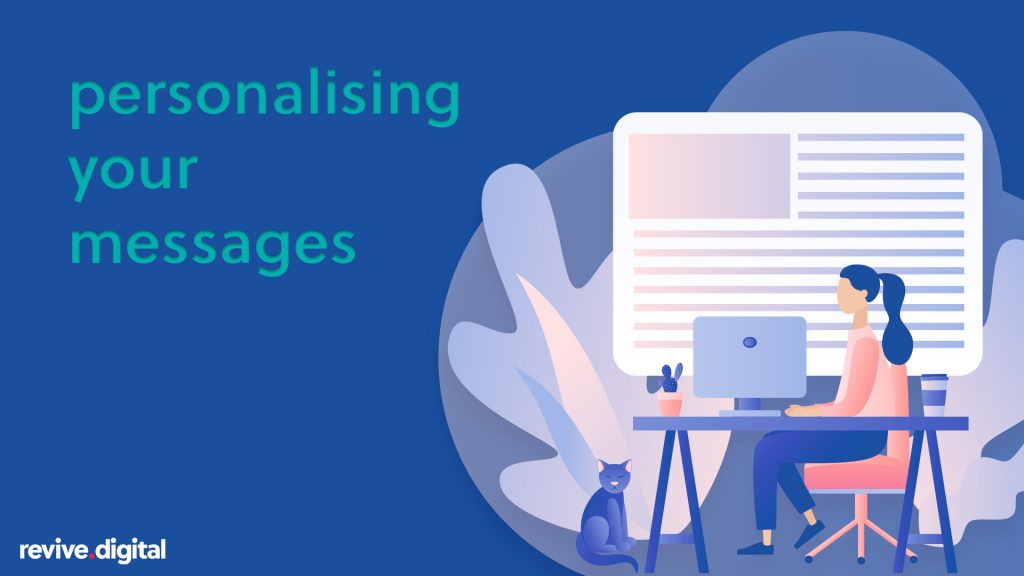
Time to Split - Segmentation and Personalising Emails
While it's easy to send a single email to your entire list, this 'batch and blast' technique isn't the most effective way of communicating:
- Your audience will tire of messages that aren't relevant, testing their patience and risking the spam button
- Email providers, like Gmail or Microsoft, can happily bin emails that aren't opened
- Your email sender reputation, that is the way your email content and deliverability is seen by a provider could be affected by unopened emails or multiple spam hits
(It's worth noting here that some email providers put the 'is it spam?' button right up front and centre in their display. When you don't want an email it's easier sometimes to hit the spam button than the unsubscribe button, which is usually hidden way down the bottom.) And once a person has unsubscribed it's much harder to win them back. Segmentation can be simple or complex depending on your goals, but one of the most basic splits is separating out existing customers from prospects and sending each segment the relevant emails. An existing customer may not need an incentive to engage, just something different like a new-in product or key service. Whereas a prospect may need a little incentivising before getting on board. Testing is the key. Another simple segmentation might be based on engagement – when did they last buy? When did they last open an email? Do you need to segment further and create a list of lapsed customers? Engaging people with email is easier once you have identified what's relevant to them. And with relevancy comes reward. Personalising emails gives a new depth to your customer conversations and makes them feel part of your brand too. If someone has bought product or service X, then an email showing relevant accessories or associated services might be very welcome.
Automated Email Marketing
Email is perfectly suited to automation. That may seem at opposites with the idea of personalisation, but automation can be personalised too:
Think of automation as the process of
automatically sending personalised (relevant) emails
Customers and clients don't object, for example, to an order confirmation or order shipped communications. And that's often an automated process. It's highly relevant too. You could really engage a 'hot' audience, new sign ups for example, by creating a welcome campaign. If someone signs up to your newsletters, send a series of newsletters showcasing the best bits of your brand, or other information directly related to what they signed up for. After, say, three emails (and here testing would determine the right amount and frequency) they are assigned into the customer or prospect segments depending on their action. Or if someone buys product A they are sent an offer on associated product B. If a person consistently shows an interest in service X, they are also shown how service Y can support this... The rules you create for automation have no real limits, beyond the limits of the data you hold on your customers. But the world is your automated oyster... Your email automation might include:
- Basket/Sign up abandonment
- Birthday offers
- Associated products alerts
- Thank you messages
- After care advice
- Refer a friend notices
- You can separate communications based on services or product ranges
- Reward your best customers
- Create lapsed customer re-engagement campaigns
Automation makes it easier to send campaigns that are relevant and get actionable data.
I'm a Great Brand... Here's Why
There are different ways of looking at how emails can help your brand identity. You can get traffic to your latest blog, new products or showcase your brand's quirky personality, Innocent smoothie style. But always craft your emails with care. This way when your brand's name pops up in a person's inbox they'll know what's coming is clickworthy and the content is valuable. When you get really good at email, your audience may not even read the subject line. They see the 'from' name and because you've been building that trust and sending consistently high quality messaging, they will look forward to opening. You'll leap out of the inbox ahead of the rivals. And why do this? To keep your business at the front of people's minds. It's hard to persuade someone to buy or sign up to something they don't want or need. But you can make sure that when they are ready your business is the first one they think to come to. Remember, prospective employees will see your emails too. If your emails properly reflect your brand's personality and values, people will want to work for you and that brings a host of benefits (but Employer Brand is a whole other area of marketing). So keeping your communications high quality and consistent is really important. 
Email Marketing - Measuring Your Success
It's been an issue in marketing since day one. What does success look like? But good email platforms make it easy to track the data. Open rates, click rates, unsubscribes, sales or other goals can all be tracked easily, analysed and compared. You can then look deeper, at things like conversion rates and revenue per email channel. You can track bounce rates through Google Analytics to see if your landing pages are converting. With email, patterns can be easy to spot. And part of the beauty with this form of marketing is that it's easy to make a change too. Once you get that sweet spot, you'll start to see those big ROI numbers.
Some Final Thoughts
Try to be objective when it comes to email. Look at the data to see if something's working, rather than using instinct. Some business owners will tell you that pop-up boxes are annoying and so they don't use them on their sites. But businesses use them for a reason...
… because statistically they work.
When a person is genuinely interested in your business things like pop-ups don't matter. If the stats show it's working then trust in the data. And it's the same with email. Test your send times, best days for opens or sales. Test the frequency of send. That's how you'll get the best results. Don't guess at what a person is might do when you can see how they are reacting. And don't put all the effort into crafting your email and forget the subject line. Without a good subject line the email might never get opened. Remember... 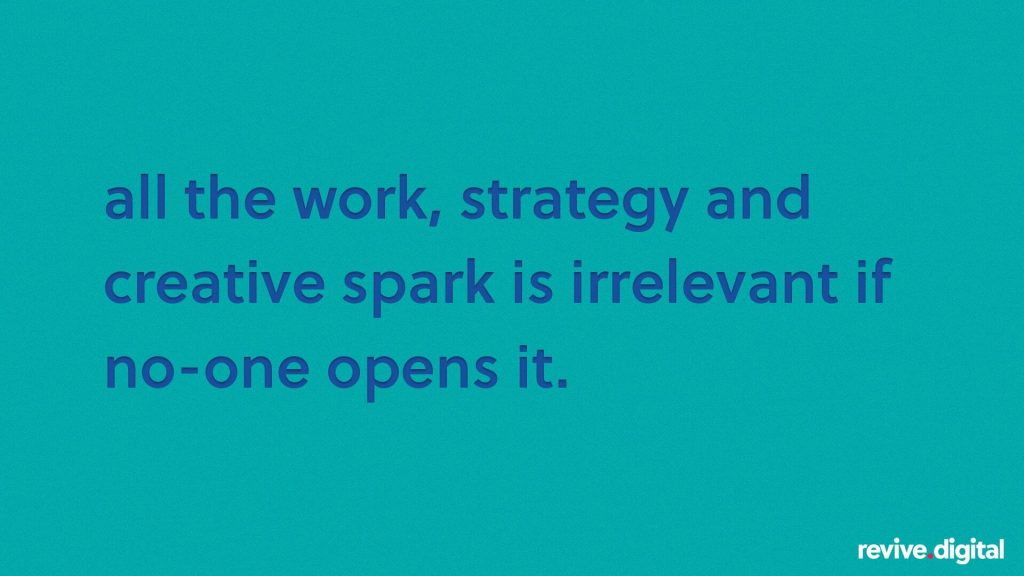
Email Marketing at Revive.Digital
'Brilliant' or 'amazing'... if you want to know which works better in a subject line* then get in touch with us at Revive.Digital. We can help manage your email campaigns, target and engage your audiences and create opportunities to help grow your business. Call us on 01702 619 139 or visit our contact page today. *From experience we know 'amazing' has usually worked better, but we also know that each business is unique so testing is the answer.


